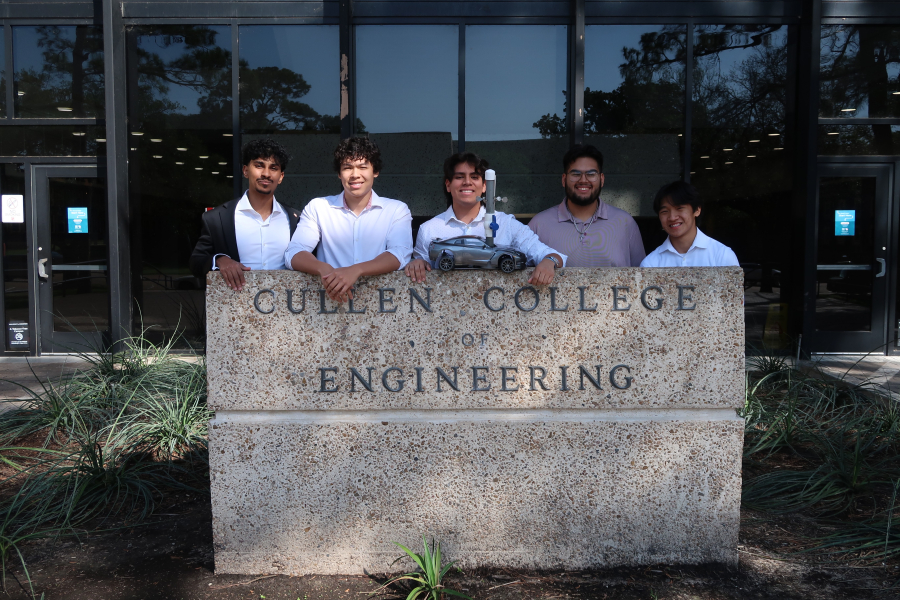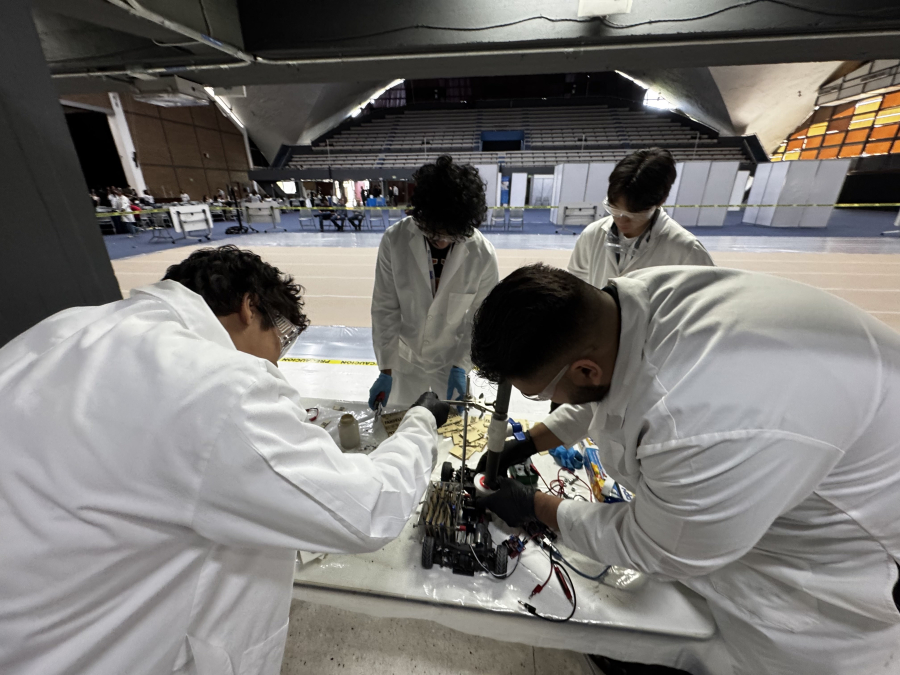The American Institute of Chemical Engineers (AIChE) oversees a variety of project-based competition initiatives to engage student members in hands-on problem-solving activities and promote exploration, innovation and excellence in chemical engineering.
One such project is the Chem-E-Car Competition: one in which “team members design and construct a chemically powered vehicle within certain size constraints that must travel a specified distance.” The vehicle must operate safely, using only chemical processes to run and stop, with “Prizes are awarded for traveling the correct distance, for creativity, and more.”
After a multi-year hiatus, the AIChE UH Chem-E-Car team competed at this year’s regional competition and took second place overall, earning them an invitation to compete at Nationals this coming fall.
Team captain Evan Castillo, an electrical engineering major, was surprised to learn that UH’s last verified Chem-E-Car Competition year was 2014.
“Initially, I was contacted by the president and vice president of our organization, and I spoke to them with some interest in this project. It’s pretty multidisciplinary, but as an electrical engineer, I didn’t really know if I’d have a place in a chemical engineering club. After talking with them about my leadership experience and how it could be valuable here, they basically made me captain,” he said. “You don’t have to be a chemical engineer to do this. You can come as you are, and you can help.
“A big goal of mine coming into this, especially as an outsider, was that I made it my mission to do the absolute best I could to make this team at least compete at the regional competition. That was really important to me.”
“As an organization, I see absolutely no reason that we shouldn’t be competing every single year, especially after this,” added chemical team lead Cesar Gonzalez, a chemical engineering major. “We really want to grow, and we have some cool ideas to come. We think we can continue to grow not just Chem-E-Car, but within AIChE itself and placing well in future competitions.”
“We’re going to this national competition in early November, and we’re going to do our best to place well, but we’re also going to keep learning,” he continued. “We have some really interesting, creative plans that I don’t think many teams do. We’re excited to not just compete at the national level, but to keep pushing beyond that.”
“Our goal for this year is to get UH back on the map as a team,” said Castillo. “We also really want to grow and gain more interdisciplinary members — more electrical engineers, more mechanical engineers — to help give us more freedom to explore our options and work on some new designs.”
“This is truly an interdisciplinary art,” Gonzalez agreed.
Most competition cars are built using two chemical reactions: one as a propulsion mechanism, and another as a stopping mechanism. Though there are some common approaches, each team may rely on unique tweaks, components and methods to design the ideal combination.
Competition rules are carefully selected and tend to change from year to year, so it takes careful planning and attention to detail to end up with a successful vehicle.
“We don’t always get things right the first time, so to understand what went wrong and how to bounce back from that is crucial,” Gonzalez said.
In fact, the process of bouncing back might be the most edifying part of the experience.
“I think the most valuable thing about this team is the interdisciplinary knowledge gained from working in a chemical engineering lab. I had never been in this kind of lab, and I know graduates who have never even touched this kind of work, so gaining that knowledge across fields has really helped a lot, as well as leading a small group of people. It’s been really valuable as well as a lot of fun as an experience,” said Castillo.


